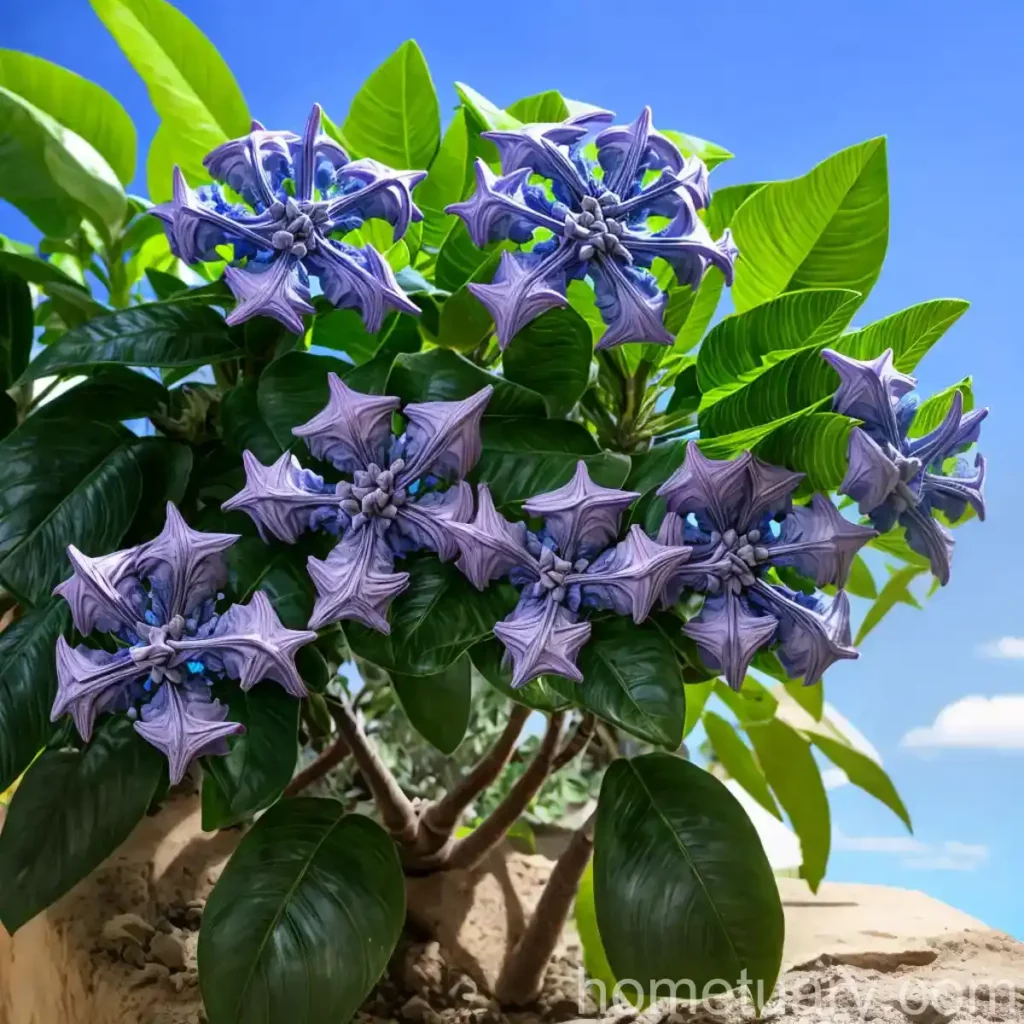Plant Profile: Roostertree (Calotropis procera)

Roostertree, scientifically known as Calotropis procera, is a fascinating plant that holds traditional, cultural, and ecological significance. This article serves as a comprehensive guide to understanding this unique plant, including its cultivation, uses, maintenance, and ecological importance.
What is Roostertree?
Roostertree, or Calotropis procera, is a species of flowering plant in the Apocynaceae family. It is native to the tropical and subtropical regions of Asia and Africa. The plant is known for its robust growth, striking flowers, and various traditional and ecological uses.
Key Takeaways
Before diving into the detailed aspects of Roostertree, let’s take a quick look at some key takeaways associated with this plant:
- Roostertree, scientifically known as Calotropis procera, is a species of flowering plant in the Apocynaceae family.
- It has traditional and cultural uses, and it is known for its ecological importance in biodiversity conservation.
- The plant is resilient and adaptive, thriving in diverse climatic conditions.
- It has medicinal properties and is used in traditional healing practices.
- Roostertree is a visually captivating plant that also attracts butterflies and other pollinators.
Now, let’s explore the various aspects of cultivating and caring for Roostertree.
Roostertree Cultivation Guide
Culture
Roostertree is a plant that can thrive in a variety of cultural conditions, making it a versatile addition to gardens and landscapes.
Uses
The uses of Roostertree extend beyond ornamental purposes. The plant has traditional medicinal properties and is used in various cultural practices. Additionally, it serves as a habitat for wildlife and contributes to ecological balance.
Water
Roostertree exhibits a moderate tolerance to drought once established. However, it is crucial to provide regular watering, especially during the initial stages of growth. Adequate moisture in the soil contributes to healthy and robust development of the plant.
Sunlight
This plant thrives in full sunlight and is best suited for locations with ample sunlight exposure. It is essential to ensure that Roostertree receives the required sunlight for optimal growth and flowering.
Fertilizer
A well-balanced fertilizer can enhance the growth and flowering of Roostertree. Applying a slow-release fertilizer during the growing season can provide the necessary nutrients for the plant’s development.
Soil
Roostertree prefers well-draining soil and can tolerate various soil types, from sandy to loamy. Ensuring proper soil drainage is essential for preventing waterlogging, which can adversely affect the plant’s health.
Pruning
Pruning can help maintain the shape and size of Roostertree. It also promotes new growth and flowering. Regular pruning, especially after the flowering season, can contribute to the plant’s overall health and appearance.
Propagation
Roostertree can be propagated through seeds, cuttings, or layering. Each method has its advantages, and selecting the most suitable propagation technique depends on the specific needs and preferences of the gardener or cultivator.
Roostertree in Containers
Roostertree can be cultivated in containers, making it a feasible option for individuals with limited gardening space. When growing in containers, it is essential to ensure appropriate soil, sunlight, and watering conditions for the plant.
Popularity
The popularity of Roostertree is attributed to its striking appearance, traditional uses, and ecological significance. It is increasingly recognized as an appealing addition to gardens, urban landscapes, and natural habitats.
Common Diseases and Pests
Like any plant, Roostertree is susceptible to certain diseases and pests. Identifying and addressing these issues promptly is essential for maintaining the plant’s health and vitality.
Common Diseases
Diseases such as powdery mildew and leaf spot can affect Roostertree. Monitoring the plant regularly for signs of disease and taking appropriate preventive measures is crucial for disease management.
Disease Diagnosis
Diagnosing plant diseases requires a keen eye for symptoms such as discoloration, wilting, or unusual growth patterns. Consulting with a plant specialist or botanist can help in accurately diagnosing and treating diseases affecting Roostertree.
Common Pests
Pests such as aphids and mealybugs can pose a threat to Roostertree. Implementing integrated pest management strategies can help effectively manage pest infestations and minimize their impact on the plant.
Botanist’s Tips for Roostertree Care
Taking care of Roostertree involves several considerations, and here are some expert tips to ensure the plant thrives:
- Provide sufficient sunlight and well-draining soil to promote healthy growth.
- Regularly monitor the plant for signs of diseases and pests, addressing any issues promptly.
- Implement proper pruning techniques to maintain the plant’s shape and encourage new growth.
- Consider the ecological significance of Roostertree and its role in supporting local biodiversity.
Fun Facts about Roostertree
- The milky latex of Roostertree has been traditionally used for various purposes, including as an insect repellent and in traditional medicine systems.
- The plant’s flowers attract butterflies and other pollinators, contributing to the local ecosystem.
- Roostertree holds cultural significance in several regions, featuring in folklore, traditional healing rituals, and crafts.
Links to External Resources
For further information on Roostertree and its cultivation, uses, and ecological significance, refer to the following resources:
- The Royal Horticultural Society – Calotropis procera
- Flowers of India – Calotropis procera
- Missouri Botanical Garden – Calotropis procera
By delving into the comprehensive spectrum of Roostertree, we can appreciate its multifaceted nature, from traditional uses to ecological importance. Whether as a striking addition to a garden or for its cultural significance, Roostertree continues to captivate with its unique qualities. Understanding and cultivating this plant allows us to foster appreciation for its traditional, ecological, and aesthetic value.















